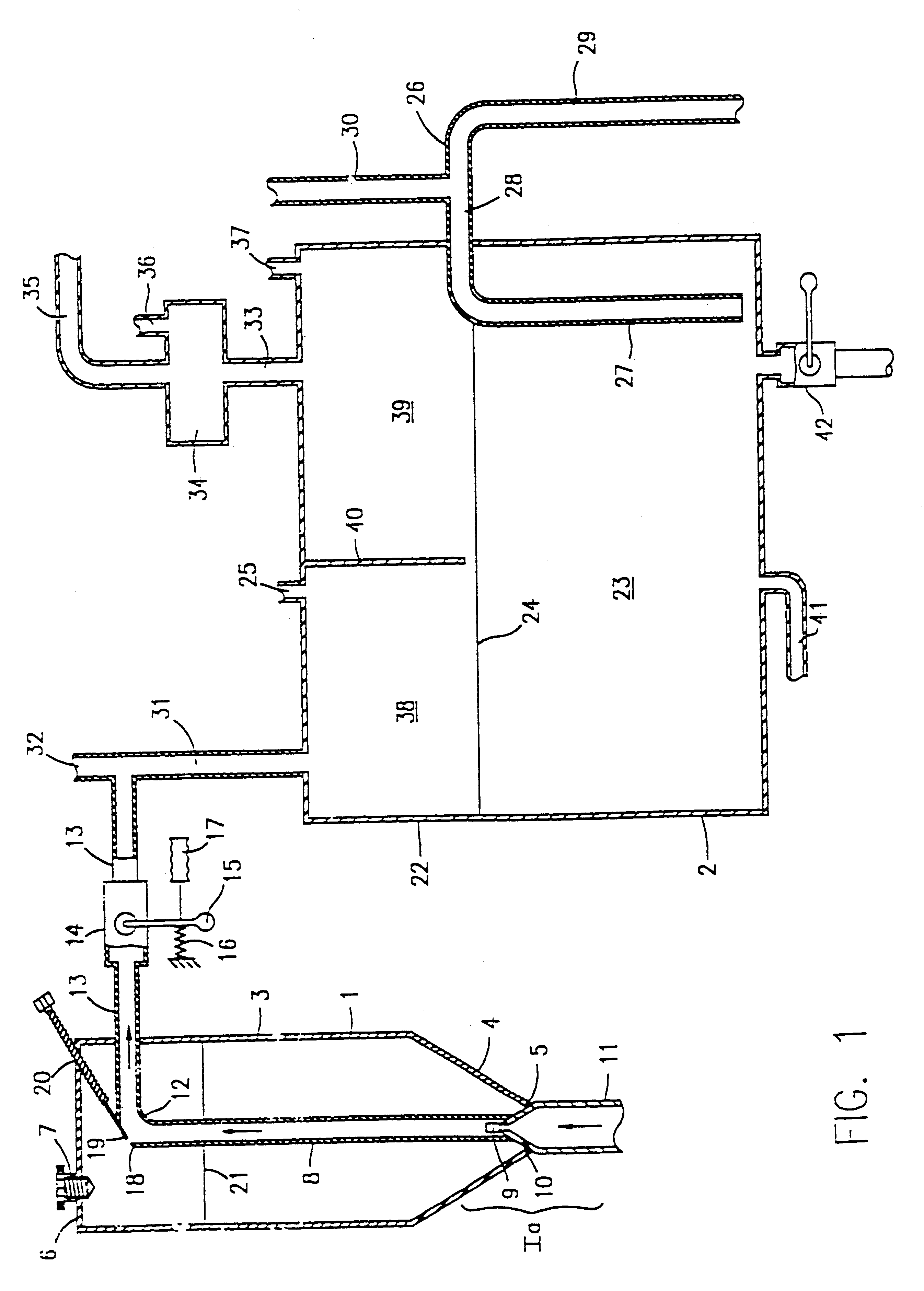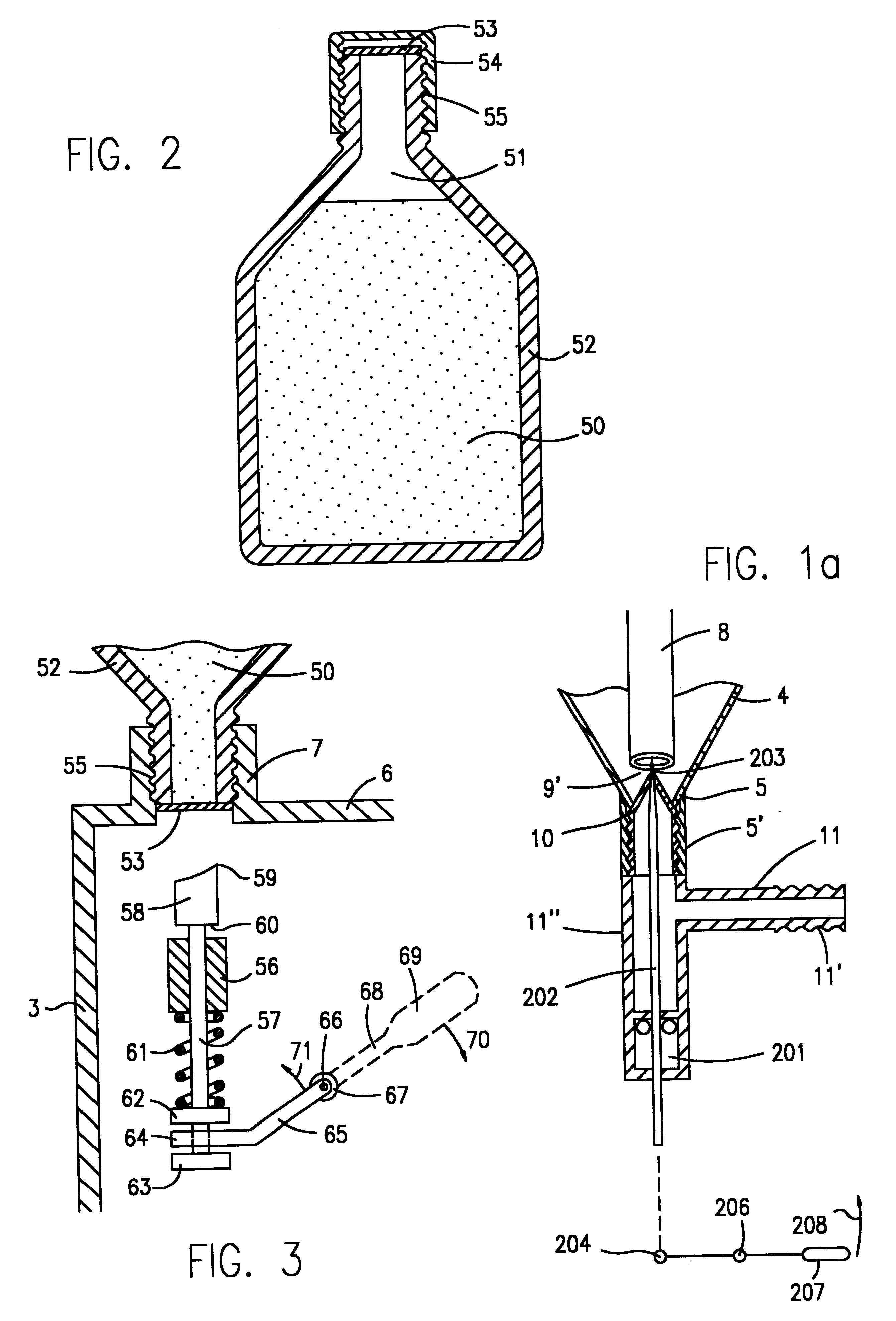Phosphine gas generation is also subject to some peculiarities giving rise to special problems which do not apply to the generation by
hydrolysis of other gases, e.g. the well-known generation of
acetylene gas by
hydrolysis of
calcium carbide as disclosed e.g. in British patent specifications 472 970 (Haworth), 776,070 (Union
Carbide) and 291,997 (Haworth).
In the case of phosphine gas generation there has always been the problem that prior art hydrolysable
technical grade metal phosphides contained impurities which on
hydrolysis liberated autoignitable phosphine homologues, phosphine derivatives, organophosphines,
diphosphines or polyphosphines.
In
spite of these expedients, these prior art products remained dangerous substances, involving fire and explosion hazards which had never been fully overcome if the products are handled inexpertly and stringent safety precautions are neglected.
This practice is nowadays criticised because of the
resultant contamination of the bulk commodities with the residues of the decomposed tablets or
pellets.
This is often difficult and cumbersome.
The spent devices must then be disposed of, a matter which nowadays may cause problems.
All these and other prior art fumigation means and their traditional methods of application suffer from the drawback that once the devices have been introduced into the
silo or other storage space and once the fumigation has commenced, there is usually very little that can be done to influence or even monitor the further progress of the fumigation.
In particular, if the composition should accidentally be deposited in a wet spot inside a grain store, this will neither be noticed in time, nor can the
resultant dangerous situation be corrected.
In those cases
contamination, if any, is more localised and the spent dispensers are more readily retrieved, although these are still inaccessible whilst the process is in progress.
The aforesaid climatic and
humidity limitations still usually apply.
If the applied circulation is too slow or ceases, e.g. due to a power failure, undesirable concentrations of phosphine may accumulate.
However, because of the conceived and real risks inherent in phosphine gas and phosphine-releasing compositions, very little real progress has been made in this regard.
The storage and transport of this highly diluted phosphine gas involves considerable logistics problems, besides being very expensive.
It also involves the grave risk that in the event of an accident on site, in transport or in storage or in the event of leaking bottles, e.g. due to defective or not properly closed valves, a gas cloud, albeit not readily flammable, is formed which is highly toxic and which, because it is heavier than air, can accumulate in low-
lying areas or in cellars or the like.
Complete control of all aspects of the aforesaid generator and process is nevertheless feasible but is complex and expensive.
Some embodiments again involve reaction of metal phosphide compositions with water vapour, and these embodiments are subject to the abovementioned problems.
These tablets take a relatively long time to decompose when dropped into water, even if the water is heated, as proposed in this prior art.
Accordingly this prior art process and apparatus suffers from the drawback that the gas generation is relatively slow and can only be accelerated by increasing the rate of feeding tablets into the water.
This in turn means that the amount of metal phosphide submerged in the water bath at any one time is relatively large, and accordingly, if it becomes necessary to stop the gas generation because of some operational failure, it will take a long time before the gas generation stops, and large volumes of phosphine gas are generated during that period which have to be disposed of in some way or another.
In addition, the gases released by such prior art composition, when dropped into water have a greater or lesser tendency to autoignite.
The hydrophobic contaminants in particular float on the water surface and interfere with the smooth progress of the process by forming emulsions and entrapping metal phosphide particles and generally contaminate the water in the apparatus and the apparatus itself, causing a disposal and cleaning problem.
These problems also arise from the proposals in PCT application WO 93 25075 wherein an extrudable paste of the metal phosphide and a water-immiscible,
grease-like substance is squeezed into water in a generator space.
The aforesaid prior art compositions suffered from the
disadvantage that the phosphine gas released therefrom on hydrolysis has a greater or lesser tendency to autoignite.
This problem has been linked to the hitherto unavoidable presence in the metal phosphide of contaminants which on hydrolysis liberate autoignitable phosphine homologues, phosphine derivatives, organophosphines, diphosphine or polyphosphines.
Because the presence of these contaminants was considered unavoidable, the incorporation of the additives in accordance with the above cited prior art was considered unavoidable.
Although these plates have been very successful commercially and play an important role in the art, they have to be handled with the same great care as other conventional metal phosphide preparations, inter alia because of the risk of autoignition on contact with
liquid water, for hitherto unknown reasons.
 Login to View More
Login to View More 


